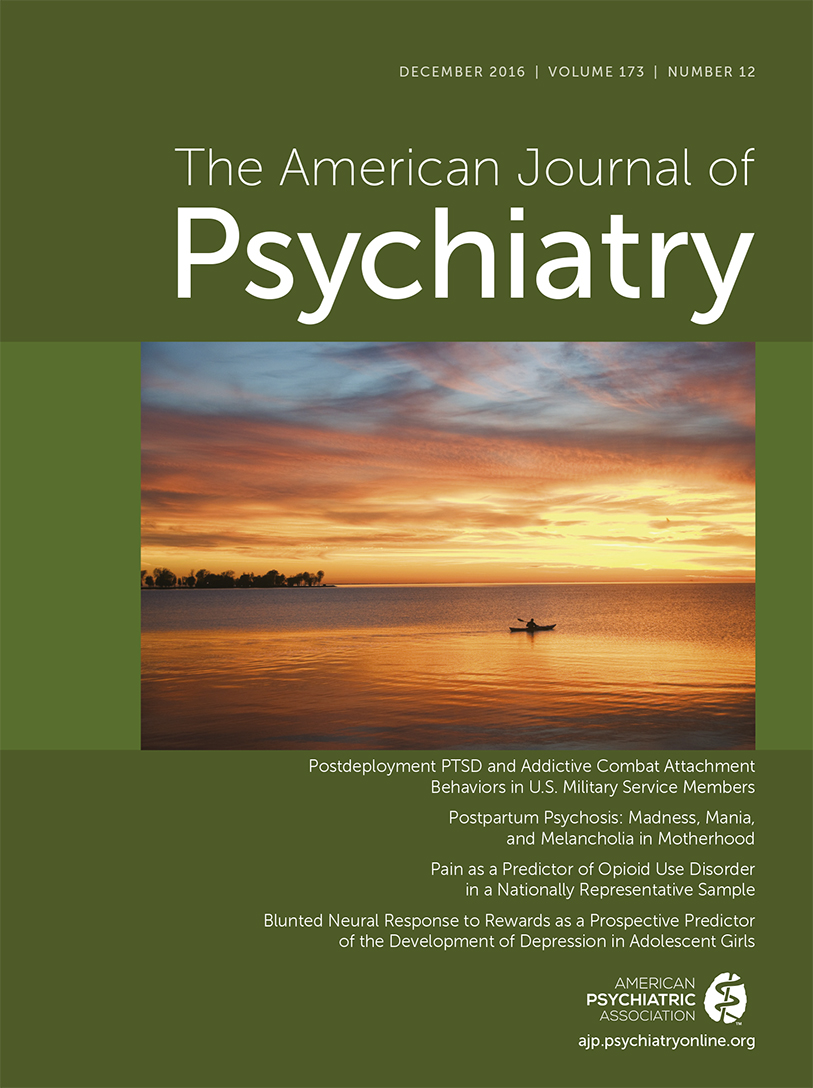In a study by Nelson et al. in this issue (
1), an electrophysiological index of reward-related positivity elicited by feedback indicating monetary gain relative to loss was found to be predictive of subsequent onset of depressive disorders in adolescent girls. The authors’ findings converge with recent functional MRI (fMRI) findings (
2,
3) providing strong evidence that blunted neuronal response to rewards, involving the ventral striatum and medial prefrontal cortex, precedes the development of adolescent depressive disorders. The reward-related positivity index of reward responsivity was previously shown to correlate significantly with fMRI measures of reward-related activity in the ventral striatum and medial prefrontal cortex (
4).
The Nelson et al. study (
1) is important from a clinical perspective because it may provide a neurobiological marker of risk for depression, which could guide the development and application of interventions to improve reward-related sensitivity and prevent onset of depressive disorders in adolescents. Reward-related positivity may serve as a cost-effective and reliable brain-based index of reward responsiveness for screening and prevention, and studies have shown that psychotherapy and pharmacological treatments can improve neural reward sensitivity (
1,
5). Further research is, however, needed to confirm that reward-related positivity is modifiable in adolescents and that doing so can help reduce risk for development of depressive disorders.
The clinical application of reward-related positivity as a biological risk marker for depression may be limited by relatively low sensitivity and positive predictive values. Positive predictive value did, however, increase when reward-related positivity was combined in series with baseline dysphoria symptoms. There are also additional measures that could improve utility for predicting onset of depression in individuals.
The reward-related positivity index employed in this study used window-based averages. Although this is a standard practice in the field, this index may be strengthened using methodological advances for computing brain potentials. The scalp-recorded event-related potential (ERP) elicited by stimuli reflects a series of overlapping components related to different underlying processes. Principal component analysis (PCA) can be used to parse the ERP waveform into independent components (
6,
7). A PCA-derived reward-related positivity measure in healthy adults was found to correlate better with fMRI measures of the reward neural activity than window-based measures (
4). Furthermore, using PCA-derived measures in combination with source localization techniques could further improve on the reward-related positivity index of reward responsiveness. Current source density measures derived from surface ERPs can provide reference-free measures of underlying neuronal activity with sharper spatial topography and better statistical properties (test-retest reliability, internal consistency) than standard scalp potentials (
8,
9).
Combining reward-related positivity with other electrophysiological measures that have been related to risk for depression and current depressive disorders may also improve utility for predicting onset of depression in adolescents. Low positive emotionality in children, which has been related to maternal depression and risk for depression, was found to be associated with resting EEG alpha asymmetry (
10). Given findings relating parental depression to frontal and parietal alpha asymmetry in offspring (
11,
12), EEG measures could be of value in this context. Studies using ERP or magnetoencephalography measures have also found reduced cortical responses to emotionally arousing stimuli in depressed adults (
13,
14) and in women with a family history of depression (
15). The use of current source density measures combined with PCA and distributed inverse solutions (low-resolution electromagnetic tomography analysis [LORETA]) provides a new approach for identifying neural sources underlying ERP measures of emotional responsivity (
16).
Thus, reward-related positivity and other electrophysiological measures complement neuroimaging findings and provide biological markers that may be of particular value as economical predictors of risk for development of depressive disorders.

